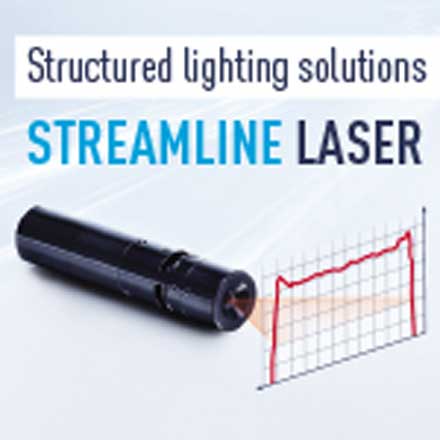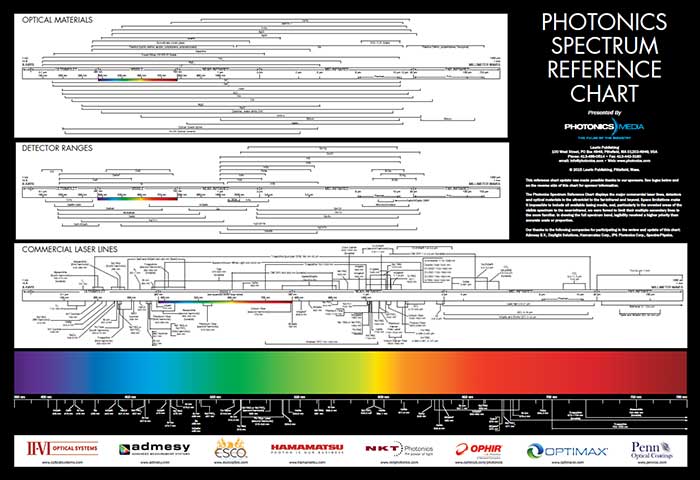A quarterly newsletter focused on the latest advancements in and applications for industrial lasers - from materials processing to metrology.
|
|
|
|
sponsor
|

|
|
UV Lasers Aid Wearables Manufacturing
Wearable technology has come a long way since the first smart watches and fitness trackers were introduced. Flexible printed circuitry and smaller components enable more powerful features and services in compact designs. Smart fabrics, leather and glass add aesthetic qualities, but fragile materials also increase risks for defects caused by production.
|
|
|
|
|
|
New Technique for the Additive Manufacturing of Glass
Researchers have developed a process using glass for additive manufacturing techniques. The scientists first mix nanoparticles of high-purity quartz glass with small amounts of liquid polymer; they then cure the mixture with light at specific points through a process called stereolithography.
|
|
|
|
|
|
Laser Microfabrication Techniques Move Rapid Prototyping to the Mainstream
Rapid prototyping is a fabrication technique that uses additive layer-by-layer fabrication to create three-dimensional structures from devices ranging in scale from MEMS devices to 3D-printed houses. Recently, rapid prototyping has captured the interest and imagination of the public owing to the potential for easier and cheaper access to everything from replacement parts for common consumer products to dental appliances.
|
|
|
|
|
|
Planar Laser-Induced Fluorescence Measures Jet Disintegration Quantitatively
Spectroscopic diagnostic techniques were used to analyze the fundamentals of sub- to supercritical jet disintegration and mixing. The research could lead to a better understanding of the precise dynamics of fuel breakup and dispersion, impacting the way rocket engines, gas turbines and diesel engines are built.
|
|
|
|
|
|
Laser Safety Sign Changes Cause Confusion
In 1969 the U.S. Department of Labor, seeing the growth of laser applications in industry, the military, research and development labs, and universities, asked the American National Standards Institute (ANSI) to oversee the development of a standard ensuring their safe use. The standard aimed to provide guidance for individuals who work with high-power Class 3B and Class 4 lasers and laser systems, and to protect employers, facilities and personnel from beam hazards and nonbeam hazards such as exposure to hazardous gases, laser dyes and contaminants.
|
|
|
|
|
|
Novel Intense Beam Pattern For Microscopy, Industrial Laser Materials Processing
The discovery of a thin, intense beam pattern, dubbed the “needle pulse beam,” could have applications ranging from imaging in pulse-echo systems to use in conjunction with nonlinear systems and media. Unlike most traditional beam patterns, which maintain a persistent shape as long as the source is operating, the needle pulse beam is formed by a light or sound wave that collapses inward, narrows for a nanosecond or less, then expands outward again. It is more intense than traditional beam patterns.
|
|
|
|
|
|
Longer Duration Time Achieved for Continuous-Wave Organic Lasing
An optically pumped organic thin-film laser has shown the ability to continuously emit light for 30 ms — more than 100 times longer than previous devices. Organic thin-film lasers use a thin layer of organic molecules as the laser medium. By designing and synthesizing molecules with novel structures, they can achieve a wider range of colors than inorganic lasers, making them well-suited for photonics applications.
|
|
|
|
|
|
 Alluxa Ultra Series Filters and Coatings
Alluxa Ultra Series Filters and Coatings
Alluxa
Alluxa Ultra Series Filters, including Narrowband, Dichroic, UV, IR, and Notch filters, provide the highest performance optical thin film solutions available today. For example, the Ultra Series Flat Top Narrowband filters offer the narrowest bandwidths and squarest filter profiles in the industry.
Visit Website
Request Info
|
|
|
|
|
|
 SL Microcontroller Laser
SL Microcontroller Laser
Osela Inc.
Osela is proud to introduce the new Microcontroller Option for our Streamline laser! This option allows for digital interfacing with the Streamline laser using RS-232 or RS-485 communication. The MC monitors and reports key parameters as well as allowing users to set operational conditions of the laser.
Visit Website
Request Info
|
|
|
 Photonics Spectrum Reference Chart
Photonics Spectrum Reference Chart
Photonics Media
This full-color, 30 × 20.5-inch poster of the photonics spectrum displays the major commercial laser lines, detectors and optical materials in the ultraviolet to the far-infrared and beyond. The chart was updated in 2015 to reflect the changing technologies in the photonics industry. The convenient format makes it easy to quickly find the information you need.
Visit Website
Request Info
|
|
|
|
|
|
International Surface Imperfection Standard
Thu, Jun 8, 2017 1:00 PM - 2:00 PM EDT
Presenter Dave Aikens, who is leading the project to overhaul and streamline the next generation of the ISO 10110 international surface imperfection standard, will clarify the role of "scratch and dig," a method for specifying and inspecting optics for imperfections by visually comparing imperfections to a set of pre-made and certified scratch samples to determine the grade. Although the "scratch and dig" method is used broadly in the industry, especially in the U.S. and Asia, it is an approach that is often misunderstood and applied incorrectly. Since 1945, MIL-PRF-13830B has been used as the standard for surface imperfections specification and measurement throughout the world. Increasingly demanding applications have been making this standard obsolete. Now the optics industry has a choice of which standard to use, and it's not always clear which is the best path. Aikens will address this issue and the factors to consider regarding each potential option. Aikens is president and founder of Savvy Optics Corp. and has been involved in optics drawings and specifications for over 30 years.
|
|
|
|
|
Industrial Photonics Magazine
|
|
| |
|
 Industrial Photonics is your global resource on lasers, sensors, machine vision and automation systems for materials processing, process control and production.
Industrial Photonics is your global resource on lasers, sensors, machine vision and automation systems for materials processing, process control and production.
Stay current with a FREE subscription to the digital or print magazine, and expand your knowledge through our extensive archives.
Digital Sample
Subscribe Free
|
|
|
|
Photonics Media is currently seeking technical feature articles on a variety of topics for publication in Industrial Photonics. Please submit an informal 100-word abstract to our online submission form www.photonics.com/submitfeature.aspx.
|
|
|
|